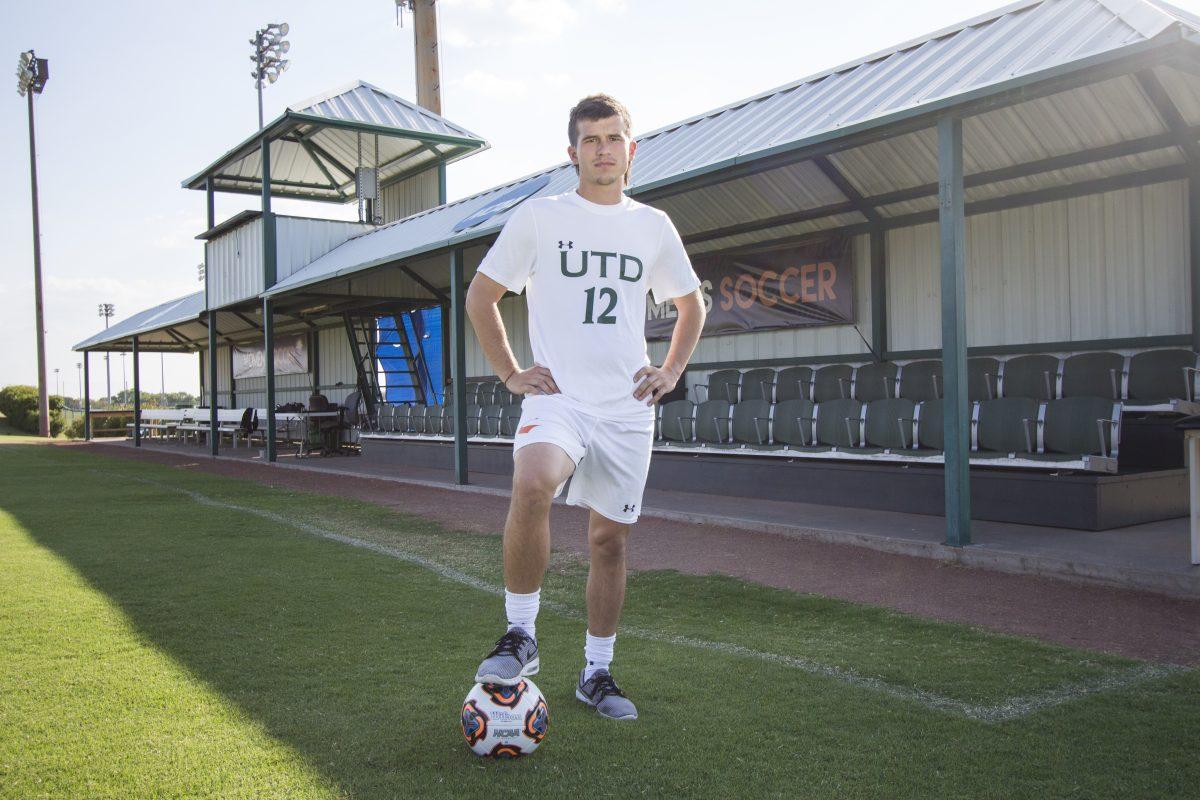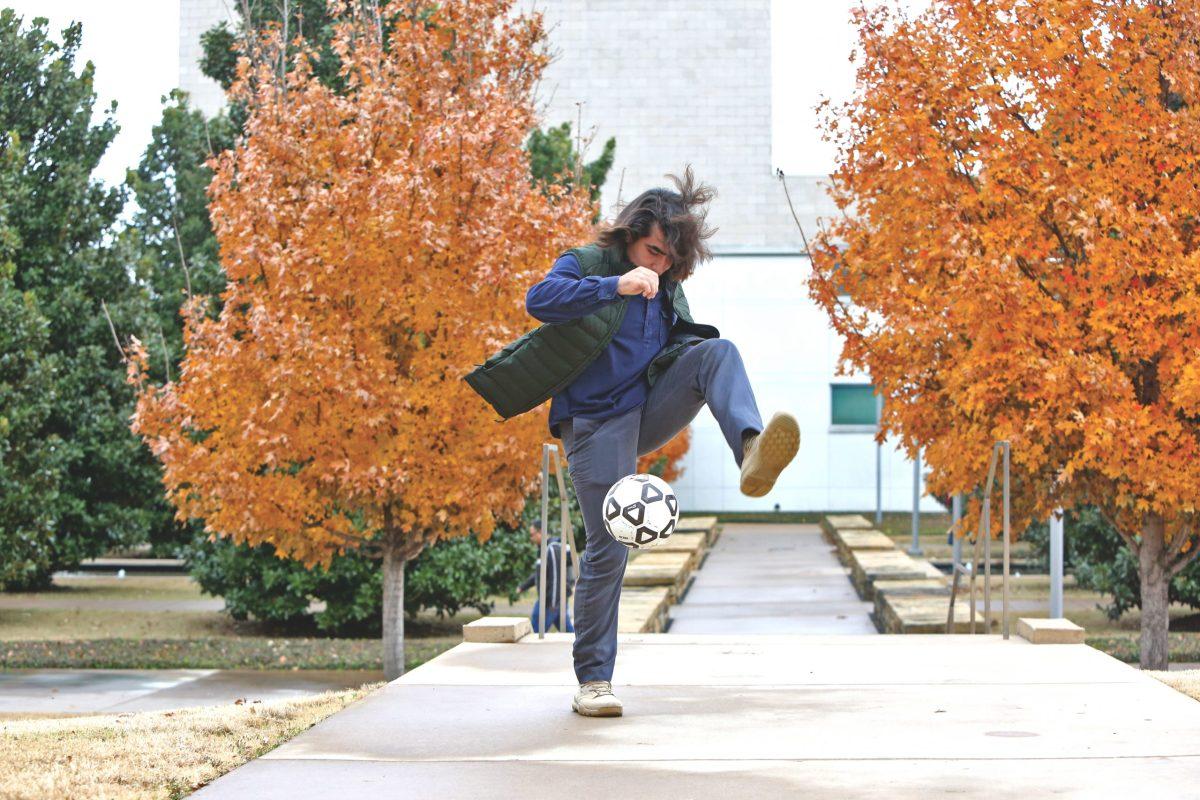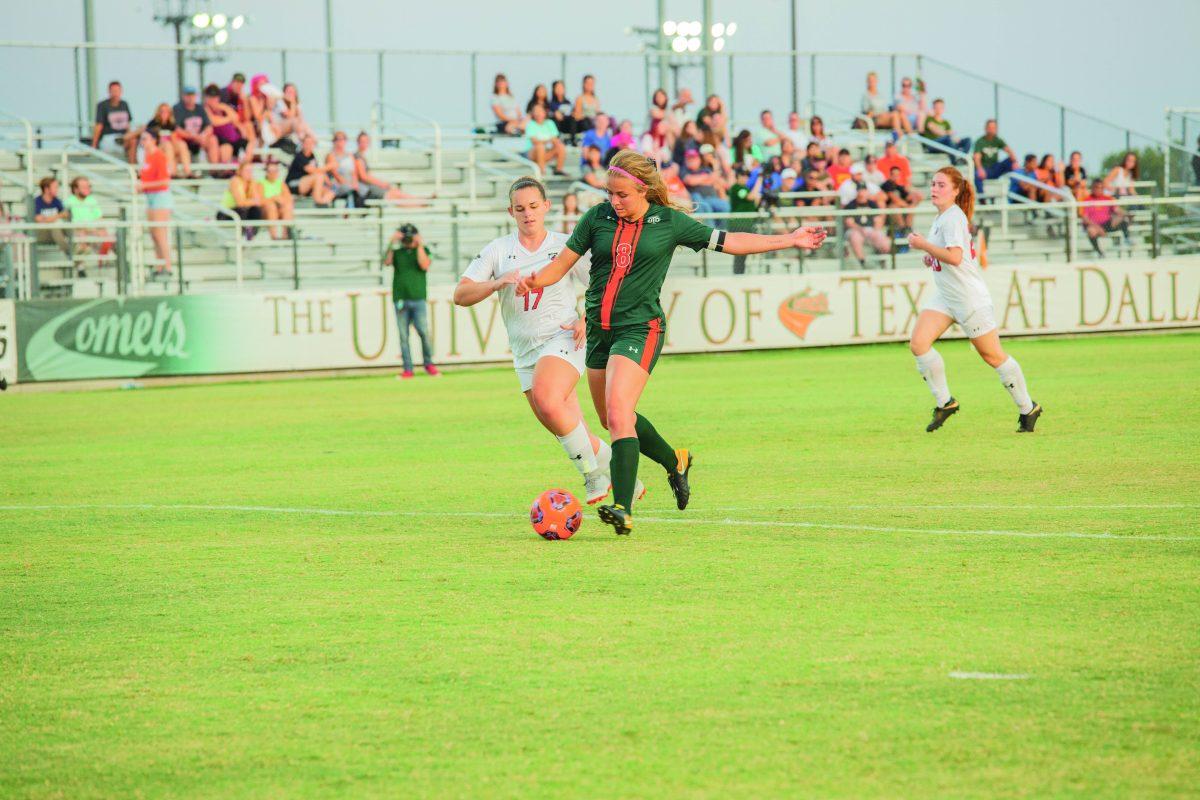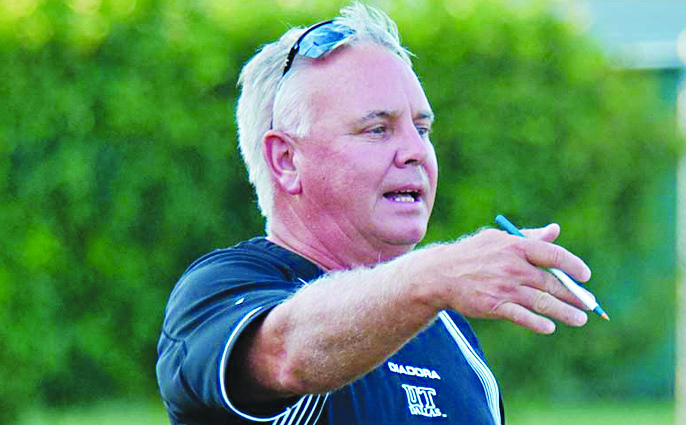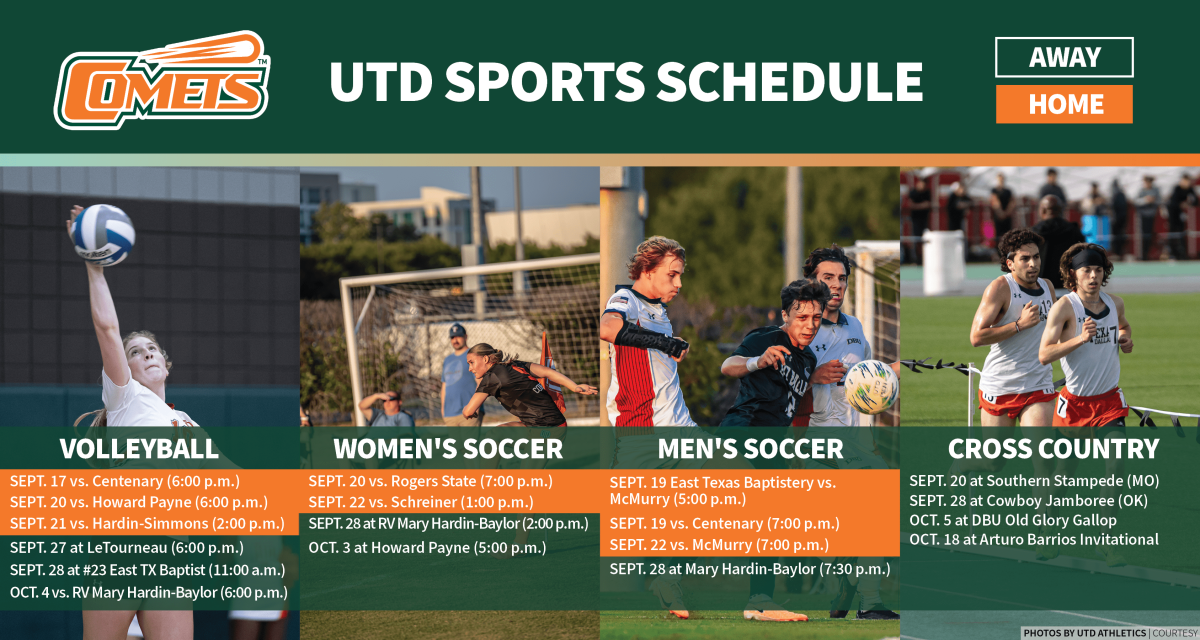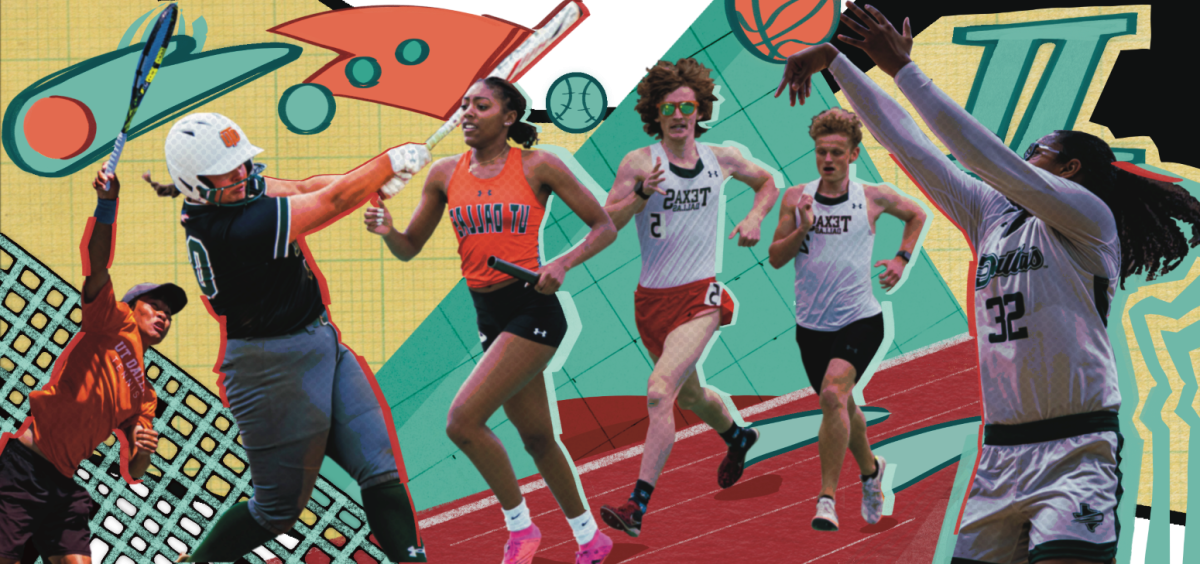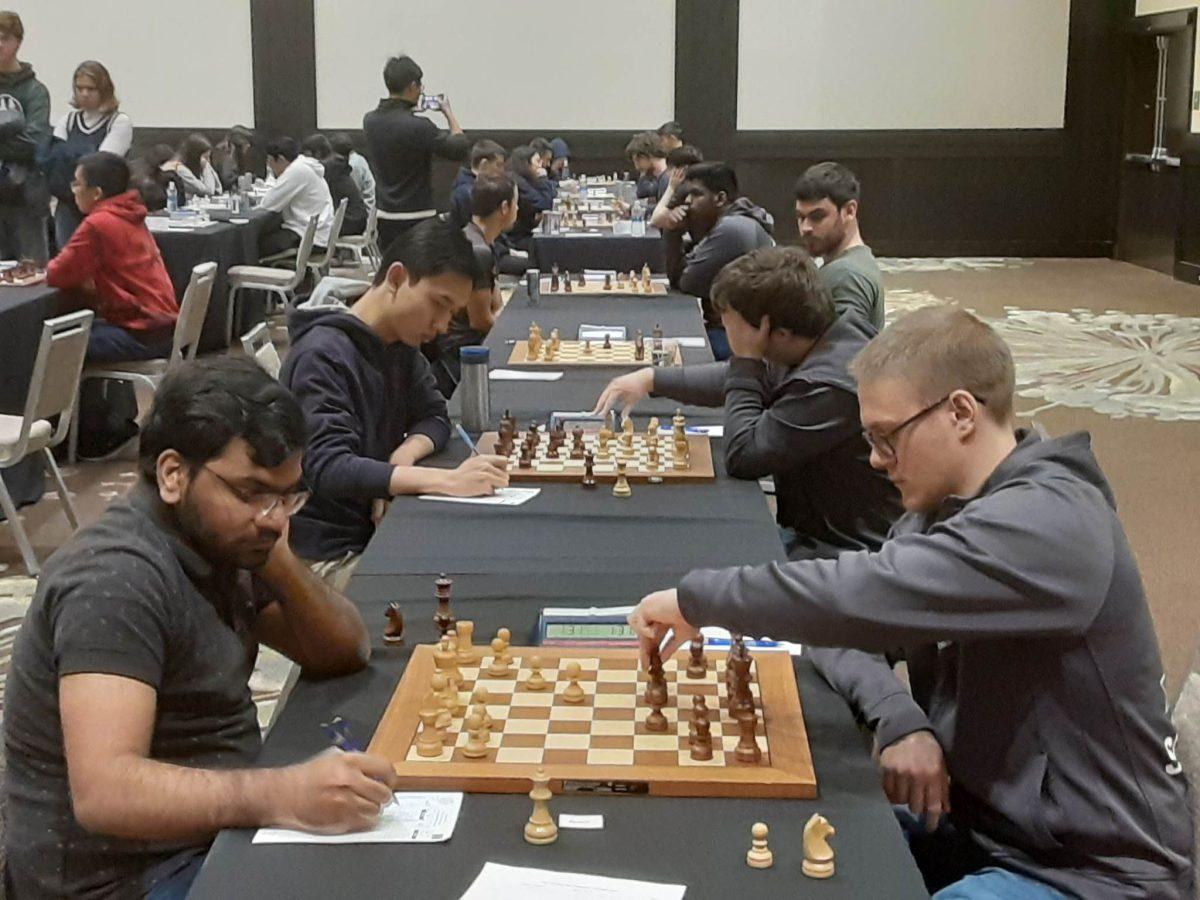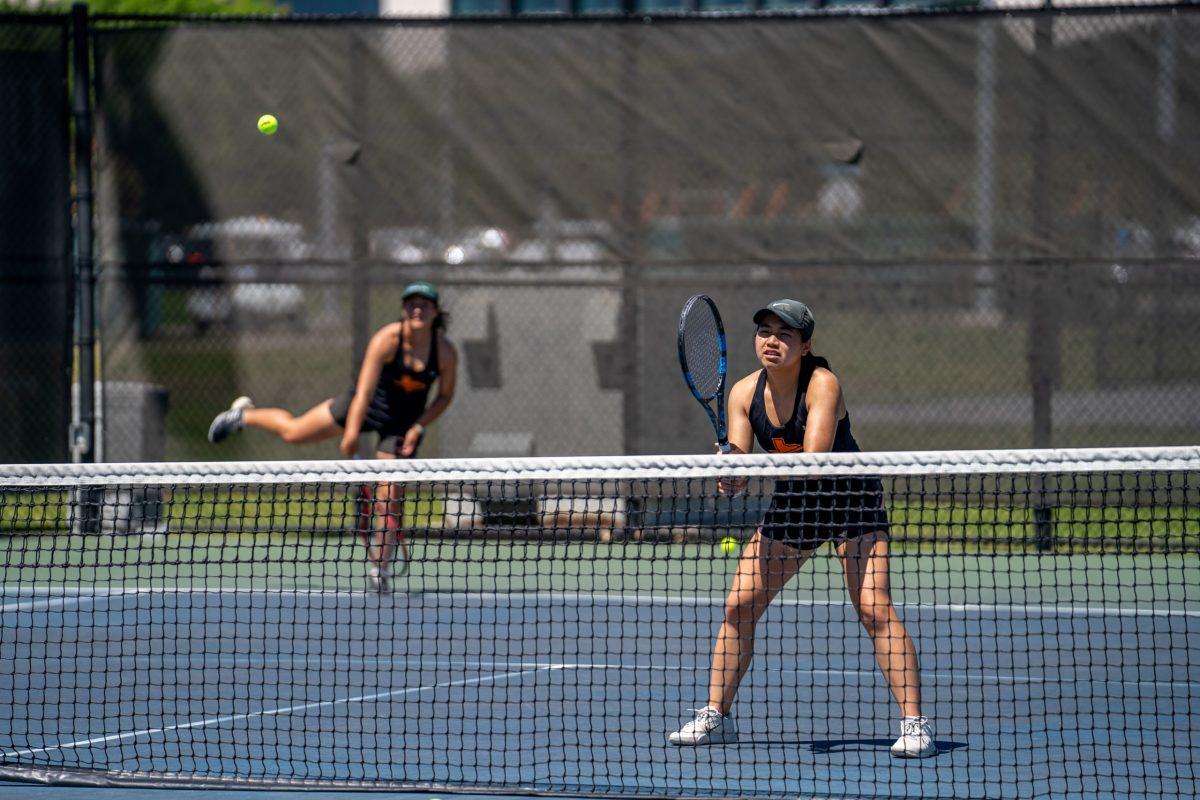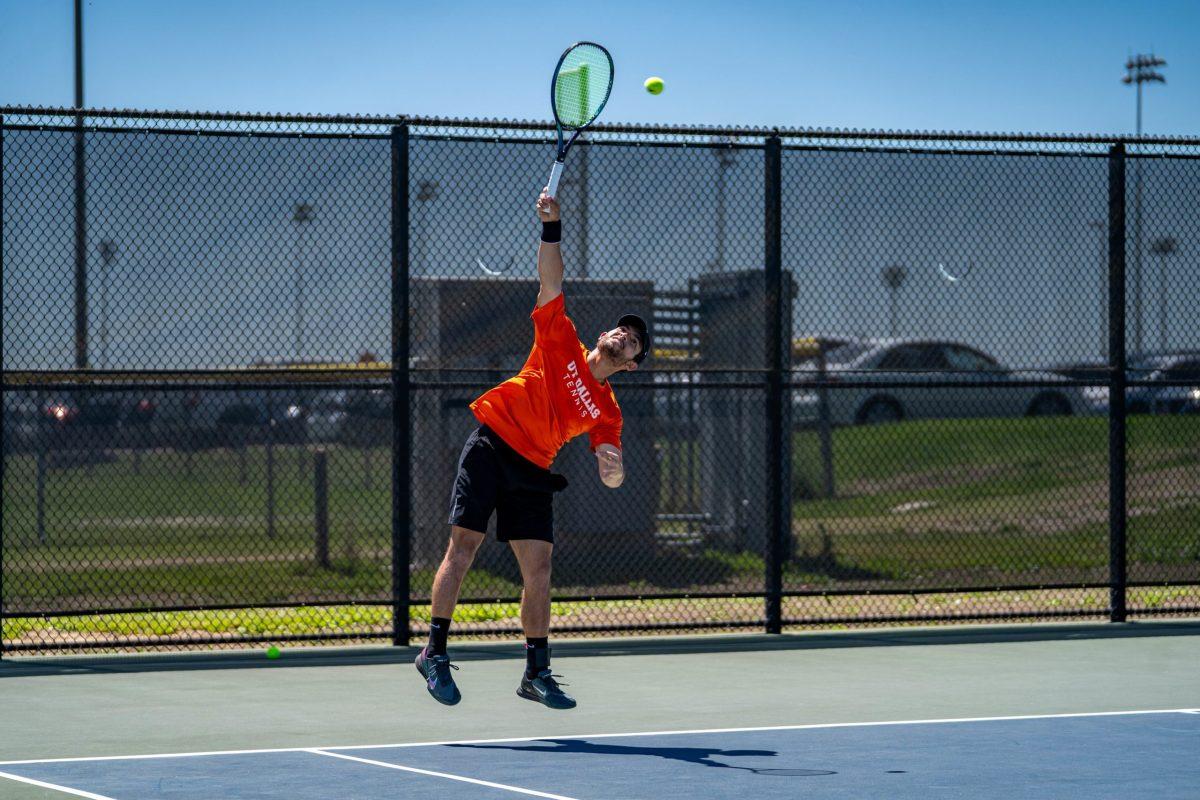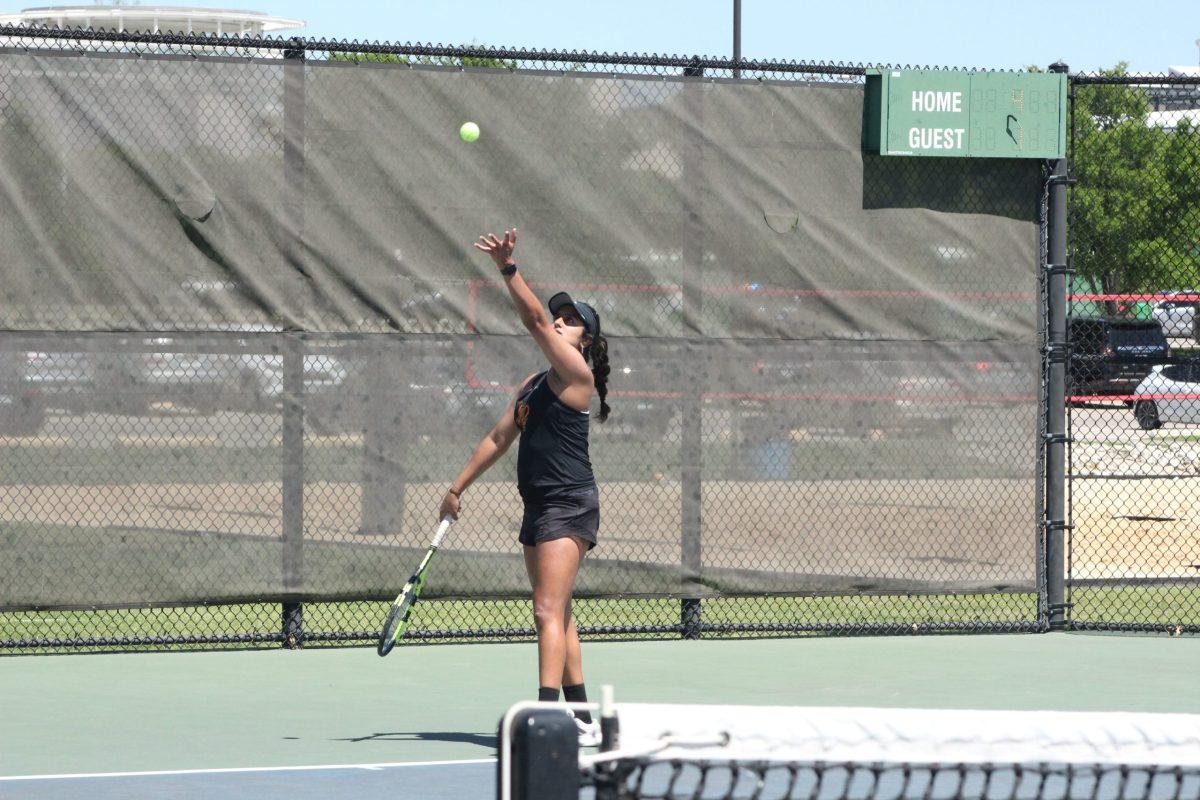Men’s soccer player gives team boost in return from injury
During a team practice on Sept. 3, 2014, junior forward J.T. Hawkins was in a full sprint trying to get the ball around one of the defenders. Suddenly, his right leg buckled under him. After taking a tumble to the ground clutching his right knee, he immediately assumed the worst. Hawkins had suffered a non-contact knee injury, tearing his right anterior cruciate ligament.
“My leg wasn’t there,” Hawkins said. “I didn’t really feel anything at the time. I just instantly knew that (my knee) was gone.”
He had never suffered a sports injury until then.
He sat on the grass waiting for the training staff to cart him off of the field. All of his teammates made their way to the training room after practice to give their condolences.
Awaiting diagnosis, Hawkins expected the injury to be an ACL tear. When the doctors confirmed this, his fears were realized.
“My heart just dropped a little bit,” he said. “I just realized that I wasn’t going to be playing for another seven months.”
Natives of McKinney, Hawkins’ parents had never missed any of his college soccer games. When they initially found out about the injury, Hawkins said they tried to pretend like everything was normal.
“When I got home … they (acted) like nothing happened to make it seem like nothing was going on,” Hawkins said.
For Hawkins, the main concern that loomed over his head was that the probability that he would tear his other ACL had risen by 50 percent.
The months that followed would test his confidence on a daily basis.
Hawkins had the option to seek a private surgeon to treat his torn ACL, but opted for the team of doctors and physicians from the UT Southwestern Medical Center that work in conjunction with UTD. Robert Dimeff and William Roberts, both physicians for the Dallas Stars, headed the team.
Approximately five to six weeks after the initial injury, Hawkins underwent surgery.
The real challenge for Hawkins started after the surgery. For the first couple of weeks after the procedure, his leg was locked into a brace in order to keep the knee straight. He couldn’t sit in a chair, ride in a car properly or sleep comfortably. The only time he was able to remove the brace was when he used a Continuous Passive Movement machine for four hours a day in order to improve mobility in the knee.
“The first couple of weeks were absolutely terrible,” Hawkins said. “Everything went really fast once I was up and moving.”
Hawkins had the opportunity to do his rehabilitation with the staff at UT Southwestern, but decided to do it with Tom Monagan, UTD’s head athletic trainer.
“Tom is a very reliable and experienced guy … so I just did it with (him),” Hawkins said. “If it was not for Tom, I wouldn’t be the way that I am now.”
Monagan said he always sets out a game plan and goes over it with the athlete when starting rehab, setting out both short-term and long-term goals.
Monagan said Hawkins was a quick healer, but that it’s important for every injured athlete to understand the difficulties he or she is facing during rehab.
“Sometimes you have to take two steps forward, then you take one step back and then you go forward again,” Monagan said. “There can sometimes be setbacks in rehab.”
Going in, Hawkins said Monagan did not sugarcoat the process.
“(Tom) was completely straight up with me,” Hawkins said. “He would always challenge me because he knows (by telling me), ‘I don’t know if you can do it, I don’t think you can do it,’ he is basically just making me tell myself, ‘OK, I’m going to show you wrong.’”
Monagan said the main things he focused on in the beginning, especially with an ACL injury, was the pain and swelling control, along with getting the range of motion in the knee back. A total body ergometer is often used in order to maintain the athletes’ cardiovascular levels.
Hawkins said the biggest thing he had to do during rehab was lift weights. A majority of muscle in one’s leg is maintained simply by walking. Hawkins said much of the muscle in his right leg atrophied due to not walking for 10 days.
“I couldn’t even pick up my right leg for four days,” he said. “After my third day of rehab, Tom finally was just pushing me and I ended up lifting my leg. It was that difficult.”
His right quadriceps and calf had diminished. In order to regain his strength and size, Hawkins had to do calf raises, leg presses and hip flexor exercises everyday. Once his leg returned to normal size, he focused primarily on his cardio and cutting.
At four months, he was able to start jogging and do light soccer-related activities such as dribbling, but had to wait the full six months before doing any contact drills.
While sidelined, Hawkins said he learned a lot while watching the team from the bench, but admitted it was still a trying time for him.
“It was rough to start off,” he said. “It’s like they always say, ‘You never realize what you (have) until it’s gone.’”
He would see mistakes and errors from the bench that he wouldn’t have seen otherwise and corrected them for himself.
“I feel like, and I’ve heard, that I’ve come back a different player just mentally and the way I do stuff within the game,” he said.
Hawkins called this entire recovery process 60 percent mental and 40 percent physical. Before playing his first game, all he could think about was tearing his ACL again.
“Of course I had the first thoughts of, ‘I’m going to tear this thing, or it’s not going to work, or I’m not going to be able to run or something bad is going to happen,’” he said.
Despite those fears, Hawkins made his presence known in his first game back from the injury by scoring the Comets’ first goal of the 2015 season in a non-conference game against UT Tyler.
“I just looked up and then I walked over to Tom and just looked at him and thought, ‘Man, what a relief,’” he said.
Hawkins currently leads the men’s soccer team with four game-winning goals and is second in goals and points, with four and nine respectively.
In his first week back in action from the season-ending injury he suffered last year, he received honors as ASC offensive player of the week.
He still experiences aches and pains in the surrounding areas of his ACL during pre-game warm-ups and after games.
Despite this, head coach Jason Hirsch said he believes Hawkins came back as the same player he was before the injury, except with a little more hunger after missing an entire season.
Once Hawkins was medically cleared to play, Hirsch said he and the training staff set no minute restrictions for him.
Moving forward, Hawkins said the injury always lingers in his mind especially with the scar it left. But after stepping on to the field for the first time since tearing his ACL, he said he felt like nothing had ever happened and that everything was back to normal.Now he has his eyes set on the team’s accomplishments.
“(I’m excited for) conference in general because this is where it all matters,” Hawkins said. “Making sure we get into the tournament and, once we get there, making sure we win it and, once we win it, go through Nationals. (We) just have to take it one step at a time.”

